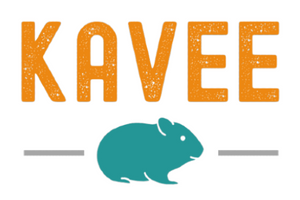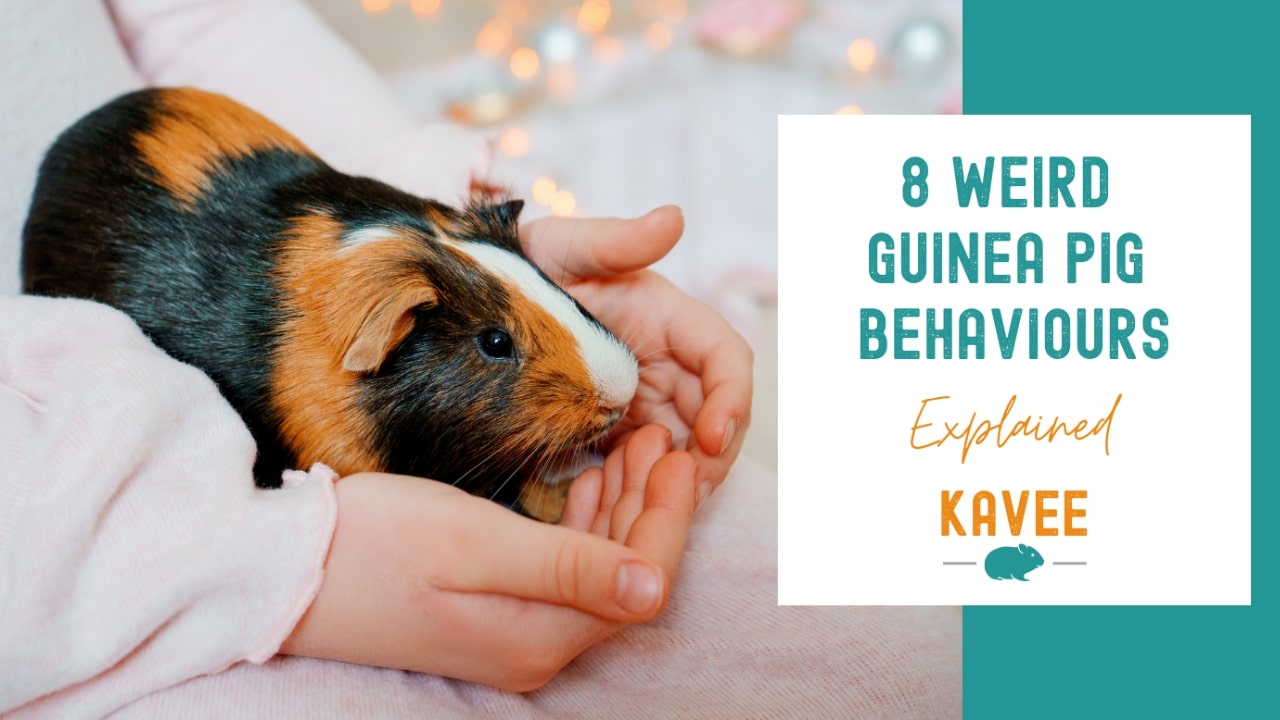As much as we love piggies in every shape and form, we have to admit it: guinea pigs are little weirdos. From jumping into the air to eating their own poop, there are quite a few behaviours that most pet parents would call ‘odd’ and are sure to surprise you if you’re new to piggy parenthood.
While strange at first, most of these habits are completely normal and part of the piggy’s way of life. So let’s take a look at some of the unique guinea pig behaviours you can expect to see.
8 Unusual Guinea Pig Behaviours
Here are some fun facts about guinea pigs that every new and experienced piggy parent should know to better understand their piggies. From health-related behaviours to a few unusual habits, these are the most common ones.
1. Popcorning
Think of the way popcorn jumps into the air when it’s popping, doesn’t that remind you of something? For years, piggy parents have compared this act to a common piggy behaviour. Popcorning is when a guinea pig jumps into the air with a squeak of joy, usually while running. It could be that they’re really happy with their new guinea pig bedding, or are having a great time with their furry friends!
How often you can expect a guinea pig to popcorn will be down to how excitable they are, with some popcorning more often than others - for example, young piggies are more likely to popcorn than senior piggies. But don’t be alarmed if your piggy never popcorns, some simply prefer to show their happiness in other ways!
2. Wheeking
Guinea pigs might not speak our language, but they won’t let that stop them from trying to talk to us. From chuttering to squeaking, our furry friends are quite vocal, and their many noises can indicate a variety of things. Wheeking is a high-pitched squeaking that guinea pigs make when they want a treat or ask for your attention. It can also be their way to call out for their furry cage mates!
This is considered a happy sound, often heard whenever you rustle that bag of salad in your fridge and remind your furry family how much they love to eat. Not all guinea pigs wheek, and some might do it more than others. Here’s a fun guinea pig fact: every piggy has a different type of wheek, and as you get to know each other, you’ll be able to recognise which piggy is calling for your attention!
3. Eating Poop
Do guinea pigs eat their own poop? Yes, but what guinea pigs eat isn’t just any poop, it’s caecotrophs. These round, poop-like pellets contain the nutrients their bodies couldn’t process the first time they ate their meal. So their clever bowels expel these nutrients to allow piggies to assimilate all the fibre they need for a healthy diet.
While they might first look like any guinea pig poop, caecotrophs are softer and greener in colour. This behaviour is common in all piggies, but not every piggy parent will see it, as guinea pigs usually eat their caecotrophs straight from their bottom once expelled.
4. Licking
We’re familiar with dogs licking their hoomans to show affection, but did you know that piggies do the same? Guinea pigs lick as a way to bond with people and other piggies. Licking is generally considered a positive behaviour, even if sometimes it might only happen because your piggy likes the taste of your naturally salty skin, or can smell food (always make sure to wash your hands before handling piggies!).
If a guinea pig is licking excessively, then it can be a sign of boredom, or indicate a skin issue if they’re licking themselves. Always pay attention to what accompanies the licking to better understand your sweet floof!

5. Biting
As small prey animals, guinea pigs are hardly aggressive, especially towards hoomans. But can guinea pigs bite you? Yes, guinea pigs will bite if they suddenly feel threatened or are in pain. What the bite means depends on the situation in which it happens.
If your guinea pig bites you while you’re holding them, it can be their way to tell you that they’ve had enough cuddles and need to go back to their important piggy business. If they bite when you try to pet them, it could either be because they want to be left alone (especially if it’s preceded by a gentle nibble!) or are in pain. Biting can also extend to their guinea pig cage, and can be a sign of boredom, highlighting their need to get more enriching accessories into their home.
6. Pee Attacks
We’re all familiar with the large amount of peeing that piggies do, but some of it has a completely different meaning from out-of-necessity and scent-marking pee. Guinea pigs may squirt pee at one another to tell the other piggy to stay away. You’ll notice the difference if you spot pee go high in the air and in the direction of another piggy, rather than directly on their bedding!
This strange behaviour is more common in female guinea pigs as a way to tell male suitors or clingy female furry friends that they’re annoyed at them. You’ll be impressed by how far their pee attacks can reach, and unfortunately might have to extend your next cleaning routine to the walls! Here's a tip: add pee pads to high-traffic areas to contain some of the extra unexpected pee attacks.
7. Chasing
This next behaviour might explain why some piggies attack each other with pee. Guinea pig chasing happens when your piggies are asserting their dominance or bonding. This common behaviour can often be followed by mounting and butt sniffing, which is all part of your piggies’ way to play and get to know each other! However, it can also be a sign that your piggies need more room to zoom, and their current cage might not be big enough to accommodate your whole furry family.
As you might already know, every guinea pig herd has one or two dominant piggies and its submissive furry friends. Knowing how to pair guinea pigs is important to prevent this bonding behaviour from turning aggressive. For example, two dominant male piggies will struggle to get along and should never be paired together.
8. Pancaking
Since piggies love food so much, it’s only fitting to have another behaviour named after food. A ‘pancaking’ guinea pig lies on their belly with their paws stretched out, resembling a pancake.
A guinea pig pancake is a sign of how relaxed they feel and how much they trust you. This prey animal has just taken all defences down and is relaxing near you, there’s no higher praise than that! Pancaking can often be accompanied by content noises like ‘bubbling’, a guinea pig’s version of a happy purr. It might also be because your piggy is feeling warm, in which case you should consider adding cool mats and freezable bottles to prevent heatstroke.

Conclusion
Yes, guinea pigs may be furry little weirdos, but we love them even more for their unique quirks and funny behaviours. You’re likely to see a few of the ones we listed above more than once, while others may be harder to spot. The important thing is that you’ll rarely need to worry about them, as all of these behaviours tend to be normal piggy habits.
But if you’re starting to think that your piggy might need a happiness boost that calls for popcorning, make sure you’re providing them the right home, bedding, and accessories. Our products are designed by small pet experts to be piggy-approved!









